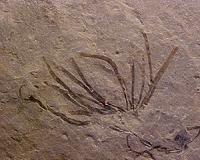| . |  |
. |
Grenoble, France (SPX) Feb 09, 2011 A novel X-ray imaging technology is helping scientists better understand how in the course of evolution snakes have lost their legs. The researchers hope the new data will help resolve a heated debate about the origin of snakes: whether they evolved from a terrestrial lizard or from one that lived in the oceans. New, detailed 3-D images reveal that the internal architecture of an ancient snake's leg bones strongly resembles that of modern terrestrial lizard legs. The results are published in the 8 February issue of the Journal of Vertebrate Paleontology. The team of researchers was led by Alexandra Houssaye from the Museum National d'Histoire Naturelle (MNHN) in Paris, France, and included scientists from the European Synchrotron Radiation Facility (ESRF) in Grenoble, France, where the X-ray imaging was performed, and the Karlsruhe Institute of Technology (KIT), Germany, where a sophisticated technique and a dedicated instrument to take the images were developed. Only three specimens exist of fossilised snakes with preserved leg bones. Eupodophis descouensi, the ancient snake studied in this experiment, was discovered ten years ago in 95-million-year-old rocks in Lebanon. About 50 cm long overall, it exhibits a small leg, about 2 cm long, attached to the animal's pelvis. This fossil is key to understanding the evolution of snakes, as it represents an intermediate evolutionary stage when ancient snakes had not yet completely lost the legs they inherited from earlier lizards. Although the fossil exhibits just one leg on its surface, a second leg was thought to be concealed in the stone, and indeed this leg was revealed in full detail thanks to synchrotron X-rays. The high-resolution 3-D images, in particular the fine detail of the buried small leg, suggest that this species lost its legs because they grew more slowly, or for a shorter period of time. The data also reveal that the hidden leg is bent at the knee and has four ankle bones but no foot or toe bones. "The revelation of the inner structure of Eupodophis hind limbs enables us to investigate the process of limb regression in snake evolution," says Alexandra Houssaye. The scientists used synchrotron laminography, a recent imaging technique specially developed for studying large, flat samples. It is similar to the computed tomography (CT) technique used in many hospitals, but uses a coherent synchrotron X-ray beam to resolve details a few micrometers in size--some 1000 times smaller than a hospital CT scanner. For the new technique, the fossil is rotated at a tilted angle in a brilliant high-energy X-ray beam, with thousands of two-dimensional images recorded as it makes a full 360-degree turn. From these individual images, a high-resolution, 3-D representaton is reconstructed, which shows hidden details like the internal structures of the legs. "Synchrotrons, these enormous machines, allow us to see microscopic details in fossils invisible to any other techniques without damage to these invaluable specimens," says Paul Tafforeau of the ESRF, a co-author of the study.
Share This Article With Planet Earth
Related Links European Synchrotron Radiation Facility Darwin Today At TerraDaily.com
 Putting The Dead To Work For Conservation Biology
Putting The Dead To Work For Conservation BiologyIthaca NY (SPX) Jan 21, 2011 Conservation paleobiologists-scientists who use the fossil record to understand the evolutionary and ecological responses of present-day species to changes in their environment - are putting the dead to work. A new review of the research in this emerging field provides examples of how the fossil record can help assess environmental impact, predict which species will be most vulnerable to e ... read more |
|
| The content herein, unless otherwise known to be public domain, are Copyright 1995-2010 - SpaceDaily. AFP and UPI Wire Stories are copyright Agence France-Presse and United Press International. ESA Portal Reports are copyright European Space Agency. All NASA sourced material is public domain. Additional copyrights may apply in whole or part to other bona fide parties. Advertising does not imply endorsement,agreement or approval of any opinions, statements or information provided by SpaceDaily on any Web page published or hosted by SpaceDaily. Privacy Statement |